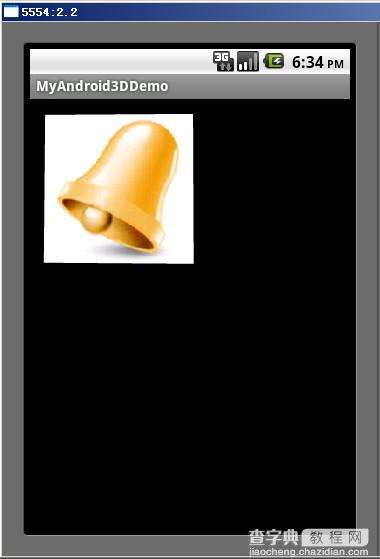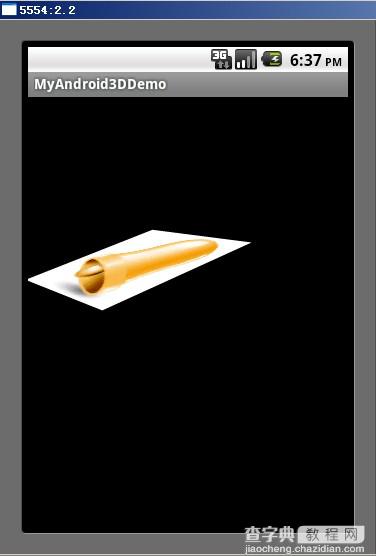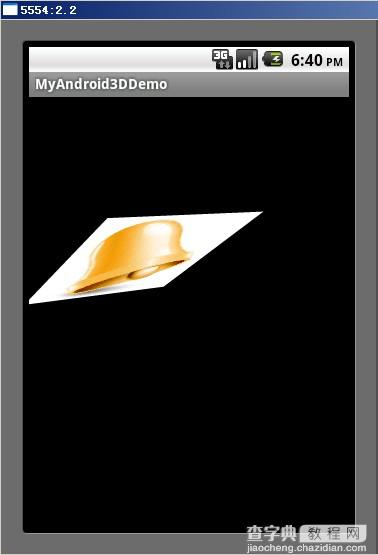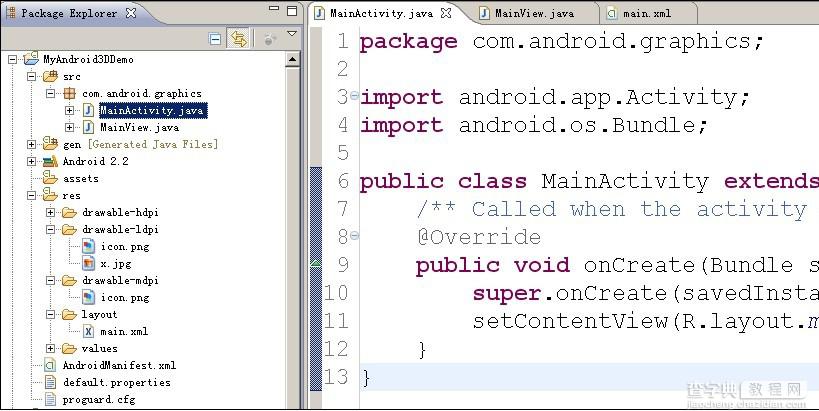本文实例讲述了Android编程实现3D旋转效果的方法。分享给大家供大家参考,具体如下:
下面的示例是在Android中实现图片3D旋转的效果。
实现3D效果一般使用OpenGL,但在Android平台下可以不直接使用OpenGL,而是使用Camera实现,Camera中原理最终还是使用OpenGL,不过使用Camera比较方便。 Camera类似一个摄像机,当物体不动时,我们带着摄像机四处移动,在摄像机里面的画面就会有立体感,就可以从其它的角度观看这个物体。废话不多说,直接看示例。
运行效果如下:




项目结构:

MainView.java中代码:
package com.android.graphics; import android.content.Context; import android.graphics.Bitmap; import android.graphics.BitmapFactory; import android.graphics.Camera; import android.graphics.Canvas; import android.graphics.Matrix; import android.graphics.Paint; import android.util.AttributeSet; import android.view.MotionEvent; import android.view.View; public class MainView extends View{ //Camera类 private Camera mCamera; private Bitmap face; private Matrix mMatrix = new Matrix(); private Paint mPaint = new Paint(); private int mLastMotionX, mLastMotionY; //图片旋转时的中心点坐标 private int centerX, centerY; //转动的总距离,跟度数比例1:1 private int deltaX, deltaY; //图片宽度高度 private int bWidth, bHeight; public MainView(Context context,AttributeSet attributeSet) { super(context,attributeSet); setWillNotDraw(false); mCamera = new Camera(); mPaint.setAntiAlias(true); face = BitmapFactory.decodeResource(getResources(), R.drawable.x); bWidth = face.getWidth(); bHeight = face.getHeight(); centerX = bWidth>>1; centerY = bHeight>>1; } void rotate(int degreeX, int degreeY) { deltaX += degreeX; deltaY += degreeY; mCamera.save(); mCamera.rotateY(deltaX); mCamera.rotateX(-deltaY); mCamera.translate(0, 0, -centerX); mCamera.getMatrix(mMatrix); mCamera.restore(); //以图片的中心点为旋转中心,如果不加这两句,就是以(0,0)点为旋转中心 mMatrix.preTranslate(-centerX, -centerY); mMatrix.postTranslate(centerX, centerY); mCamera.save(); postInvalidate(); } @Override public boolean onTouchEvent(MotionEvent event) { int x = (int) event.getX(); int y = (int) event.getY(); switch(event.getAction()) { case MotionEvent.ACTION_DOWN: mLastMotionX = x; mLastMotionY = y; break; case MotionEvent.ACTION_MOVE: int dx = x - mLastMotionX; int dy = y - mLastMotionY; rotate(dx, dy); mLastMotionX = x; mLastMotionY = y; break; case MotionEvent.ACTION_UP: break; } return true; } @Override public void dispatchDraw(Canvas canvas) { super.dispatchDraw(canvas); canvas.drawBitmap(face, mMatrix, mPaint); } }
main.xml中代码:
<"1.0" encoding="utf-8"?> <LinearLayout xmlns:android="http://schemas.android.com/apk/res/android" android:orientation="vertical" android:layout_width="fill_parent" android:layout_height="fill_parent" > <com.android.graphics.MainView android:id="@+id/cv" android:layout_width="fill_parent" android:layout_height="wrap_content" /> </LinearLayout>
希望本文所述对大家Android程序设计有所帮助。


